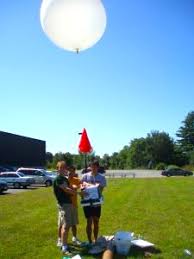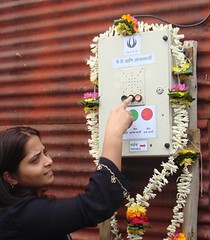Bigger, Slower, Cheaper: Detechnologizing Products

An example of a child's See-and-Say Toy.
In our last class, Rich Fletcher talked to us about de-technologization (is that even a word?). The point being, that Moore’s law, though useful and good in some respects, can be detrimental in other ways. That the push for smaller, faster, cutting edge (read: “more expensive”) leaves a lot to be desired. Most notably in developing nations who can’t afford (and don’t need!) the latest-greatest but could benefit substantially from an affordable alternative. But even first world citizens feel the curse of technology. I’m too young to remember, but my older and wiser family members talk fondly of the days when they could fix their own cars (or insert another piece of common household appliances)and bemoan the fact that now the task has become so complex that only the dealer has the required tools. So the solution, or so Mr. Fletcher proposes, is to rethink design to be bigger, slower, and cheaper. One of the projects he presented involved bringing internet to remote places. The catch is that is wasn’t real time. It was “slower” and it was a ton “cheaper”. But it was also better than no internet. Another example he talked about is the design of children’s toys. They are incredibly elegant in their simplicity, durability, and human-scaled-ness. It was inspiring to look at the workings of a See-and-Say toy that used only simple mechanical process to say the words corresponding to pictures.
“Bigger, cheaper, slower” is by no means a new concept. Below are some interesting, recent examples of “de-technologized” products:
 Home Voltage Optimization – Cheaper!
Home Voltage Optimization – Cheaper!
I know £299 doesn’t sounds cheap, but this technology, which helps reduce and stabilize electricity usage and therefor cuts energy costs and carbon emissions, has traditionally been sized and priced solely for industrial use. This is the first time that the technology has been reduced both in size and cost to enable the average consumer to take advantage of it at home, and that’s pretty exciting.
 Students Take Pictures of Earth From Space – Cheaper! Slower!
Students Take Pictures of Earth From Space – Cheaper! Slower!
For under $200, students at MIT and more recently in Australia, sent a digital camera into space on a balloon and took stunning pictures of Earth. In the past, only companies or government agencies with lots of money were able to accomplish such a feat. Granted, they didn’t stream the pics back in real time, but who cares?
 Question Box – Cheaper! Slower!
Question Box – Cheaper! Slower!
In the them of bringing internet to distant places, this project brings the power of Google to villages without internet, through an old-fashioned intermediary, the call box. People with a question can press a button and someone on the other end of the phone, sitting at an internet-connected computer, looks up the answer for them. It’s such a simple solution to the hard “last mile” (or last 100 miles) problem.
Though these examples are encouraging and show that people still appreciate a simple, elegant design that gets the job done, the main push still seems to be turning to technology to solve all of our problems. One recent trend which amuses me is the apparent need to use technology and on-line social networks to connect with people who live and work in the same physical location as you (whether that is the same city, the same neighborhood, or the same building!).
It appears the progression went like this: Back in the old days, people could only talk face-to-face, but the use of smoke signals and semaphore show that people quickly realized the benefit of long distance communication. Speed through telegrams and the telephone to the internet and appreciating being connected to loved ones who are far away. That’s great! But the backlash is setting in, people realize they spend more time “connecting” to people on-line and that traditional, location-based interactions are lacking.
Technology to the rescue! Now you can use Stackd to meet people who work in your office building or join Facebook neighborhoods to find out who lives near you and what’s going on at the local park. Though I do think it is great that these tools encourage actual interaction, it seems kinda ironic that in order to use them, you must be on your computer. What does it say about our society that we can’t even say “Hi!” the person we ride in the elevator with, but instead rely on better technology to facilitate such a traditionally simple and tech free encounter?
In order to de-technologize what has become the convoluted way people interact while in close proximity to each other, I would like to re-introduce the tin can phone!



 Picasa
Picasa Twitter
Twitter LinkedIn
LinkedIn Flickr
Flickr